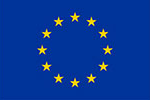How can we build on the progress made so far to make rail travel truly accessible, affordable and reliable for...
FP2-R2DATO
D21.2: System requirements of ASTP system
FP2-R2DATO advances rail safety and efficiency by developing the Advanced Safe Train Positioning (ASTP) system, a modular and scalable solution designed to deliver absolute positioning with higher accuracy of speed and location. In line with this goal, deliverable 21.2 formalises the system requirements derived from the operational analysis, while integrating state-of-the-art requirements for safe onboard electronic equipment. The ASTP concept supports a wide range of CCS and non CCS functions, including ATP, ATO, ATS/TMS and TCMS, enabling energy savings, optimised headways and a reduction of the trackside infrastructure. This deliverable was developed in two steps. The first versions highlighted some open issues about the CCS-OB architecture or specification , which were later clarified through technical notes and feedback from WP members. While final resolution lies with the broader System Pillar, D21.2 collects the clarified requirements and provides a TRL 6 framework for future integration. To conclude, the document highlights ASTP’s role in supporting interoperable applications both onboard and trackside, ensuring alignment with operational needs and analysis of required system performance for the system.
How it brings us closer to achieving better rail for Europe: The Advanced Safe Train Positioning (ASTP) system defines a modular and scalable approach to absolute train positioning, delivering more accurate speed and location data. By supporting CCS and non CCS functions such as ATP, ATO, ATS/TMS and TCMS, it enables optimised headways, energy savings and reduced reliance on trackside equipment. Through harmonised requirements and clarified system capabilities, it strengthens interoperability and provides a TRL 6 framework. This contributes to make rail operations safer, increase traffic capacity and use energy more sustainably, leading to a rail system that is more reliable, efficient and better connected across Europe.
Target audience:Rail stakeholders, member states, policy makers, national safety authorities, notified bodies
More information on this topic: FP2-R2DATO
FP4-RAIL4EARTh
D24.2: Roadmap for sustainable interiors final report
The FP4-Rail4Earth project aims to develop a sustainable and green rail system, including rolling stock, infrastructure, stations, and their sub-systems. This report outlines a clear plan for making train interiors more sustainable over the next two years (2025–2026). It identifies the key priorities for improvement, such as eco-friendly materials and passenger comfort, while setting ambitious goals for future train designs.
How it brings us closer to achieving better rail for Europe: It provides a plan for advancing sustainable interior solutions, supporting the development of more environmentally responsible and user-friendly train designs.
Target audience: Rail manufacturers, rail operators, member states, policy makers
More information on this topic: FP4-RAIL4EART
FP6-FutuRe
D5.1: State-of-the-art report for regional lines rolling stock
FP6-Future aims to ensure the long-term viability of the regional railway by reducing the total cost of ownership, while ensuring high service quality and operational reliability. It aims to increase customer satisfaction and to make rail an attractive and preferred mode of transport. This deliverable is a comprehensive report on requirement specification for rolling stock with a particular focus on mechanical architecture, mechanical parts, TCMS, traction/propulsion, modular interior, and train control together with a first concept for a lightweight, emission free rolling stock with modular interior.
How it brings us closer to achieving better rail for Europe:It develops a concept tailored to regional railways but transferable across Europe, encompassing digitalisation, automation and the use of common and new technologies for control command and signalling, wayside components, rolling stock and customer information.
Target audience: Rail stakeholders, train operators, railway industry professionals
More information on this topic: FP6-Future
RAIL4CITIES
D1.3: Innovation report
The central ambition of RAIL4CITIES was to develop a new operational, readily available and highly applicable model of stations as sustainable city promoters (SCP model), combined with a common European methodology and tool for its effective implementation. The project took inter-dependent impediments (profit-orientated business model, complex web of agents and stakeholders, policy gaps) into account and provided decision makers with the tools to transform stations into promoters of sustainable cities. The project’s innovations were tested and refined in Living Labs located in Italy, Belgium, France, Poland, Germany, and Portugal. Through real-world scenarios, stakeholder workshops, and user centred fieldwork, these pilots provided valuable insights into the operational, governance, and design challenges of station transformation, validating the model’s adaptability across diverse urban contexts. By merging data-driven analysis with human-cantered design, RAIL4CITIES equips policymakers, urban planners, and rail operators with practical tools to scale up impact and advance towards inclusive, climate-resilient urban futures.
How it brings us closer to achieving better rail for Europe: The deliverable summarises the key innovations developed and delivered by the project (mainly: the Sustainable city promoter model, Impact Assessment Methodology and the living labs) and what the project can bring to key stakeholders.
Target audience: Policy makers, urban planners, rail operators, rail stakeholders
More information on this topic: RAIL4CITIES
ESEP4Freight
D5.3: Impact assessment, scalability assessment and user handbook
The ESEP4Freight project’s main objective was to develop a web platform to enable freight customers to have visibility and access the rail freight options available across Europe. This web platform was delivered (see here) and includes various modules such as an interactive map, a schedule viewer, a contract toolbox, a match making tool and a CO2 calculator. The impact assessment, scalability assessment and user handbook provides an integrated view of the ESEP4Freight Web platform developed by the project considering three aspects:
a) the impact assessment,
b) the scalability analysis and
c) the user handbook.
The conclusion of the impact assessment is that the project has broadly achieved its Key Assessment Indicators (KAIs) and Expected Results (ERs) based on the high stakeholder engagement, the development and validation of the core modules and the validated strong potential to contribute to the European Green Deal by facilitating the freight modal shift towards rail. The scalability analysis identifies the opportunity for future improvements, including extending the data coverage, integration with real train paths data, more realistic first/last mile modelling and the development of API to ensure interoperability with third party systems. The user handbook provides guidance for the platform users. Overall, this document demonstrates that ESEP4Freight sets the foundation for a digital solution supporting the shift of freight towards rail.
How it brings us closer to achieving better rail for Europe: The ESEP4Freight project is expected to support the shift towards rail transport, with the ultimate goal to contribute to decarbonisation of transport.
Target audience: Freight Rail stakeholders, member states, policy makers
More information on this topic: ESEP4Freight
InBridge4EU
D4.1: Revision of damping
InBridge4EU supports the improvement of railway bridge design and assessment by advancing knowledge on damping behaviour. In line with this objective, the document presents the final results of the revising damping values to provide more realistic estimations that better reflect actual bridge performance under railway traffic and forced excitation. Building on previous projects such as Shift2Rail, In2Track2 and In2Track3, the work consolidates extensive measurements (over 1,500 measurements conducted on around 90 bridges) across Europe and delivers recommendations to update the current normative values stipulated in EN 1991‑2. This deliverable brings together the expertise of European universities and industry partners, offering a harmonised framework that strengthens bridge evaluation practices and supports the long‑term sustainability of Europe’s rail infrastructure.
How it brings us closer to achieving better rail for Europe: The revision of damping in railway bridges provides more realistic values that improve the accuracy of bridge design and assessment. Based on extensive measurements across five different countries in Europe, WP4 related to the revision of damping in railway bridges delivers recommendations to update the current normative values in EN 1991 2, ensuring they better reflect the actual dynamic response of railway bridges, especially at resonance. This contributes to making rail operations safer, extending bridge lifespans and ensuring more reliable performance, leading to a stronger, sustainable and interoperable rail network across Europe.
Target audience: Infrastructure managers, rail stakeholders, member states, policy makers, national safety authorities, notified bodies
More information on this topic: InBridge4EU
















